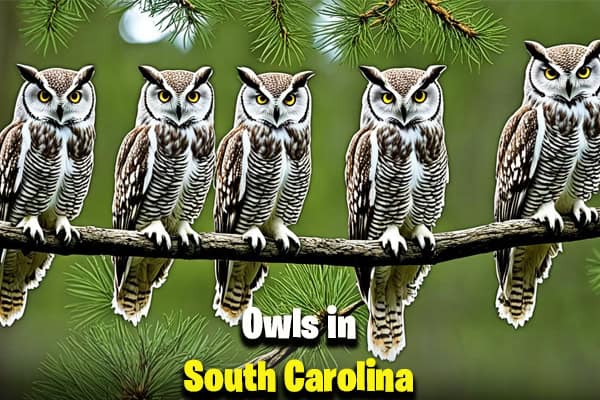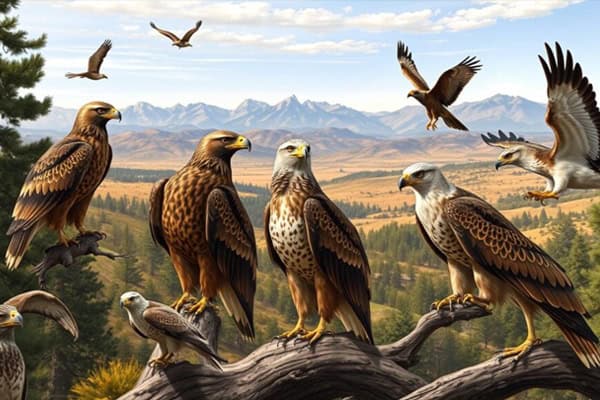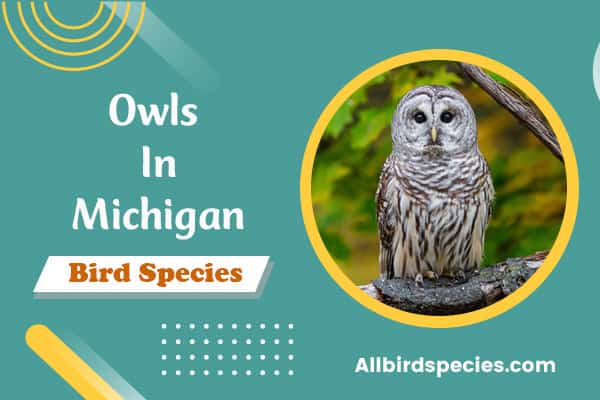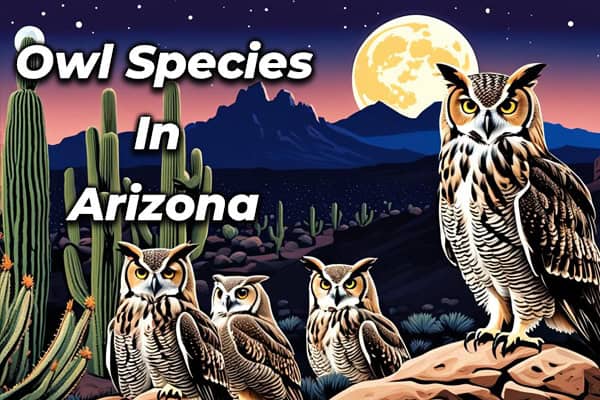Owls in South Carolina (8 Species With Pictures)
Did you know South Carolina has nine different owls? These birds are not just beautiful; they also help keep our ecosystem balanced. From common birds to rare visitors, our state’s owl species variety is amazing.
This guide will show you the fascinating owls of South Carolina. We’ll use pictures to highlight their beauty and diversity. Learning about these birds helps us appreciate our wildlife and why we need to protect it. Let’s explore the owls of our area together!
Common Owls Found In South Carolina
- Great Horned Owl
- Eastern Screech Owl
- Barred Owl
- Barn Owl
- Short-eared Owl
- Snowy Owl
- Long-eared Owl
- Burrowing Owl
- Northern Saw-whet Owl
1. Great Horned Owl
- Wingspan: 101 to 145 cm
- Length: 46 to 63 cm
- Mass: 910 to 2500 g
- Lifespan: 28 years
The Great Horned Owl, known scientifically as Bubo virginianus, is a well-known raptor in North America. It has striking looks that make it popular among owl fans and wildlife watchers. You can spot it by its mottled grey and brown feathers, big ear tufts, and bright yellow eyes. These traits make it a fierce and skilled hunter.
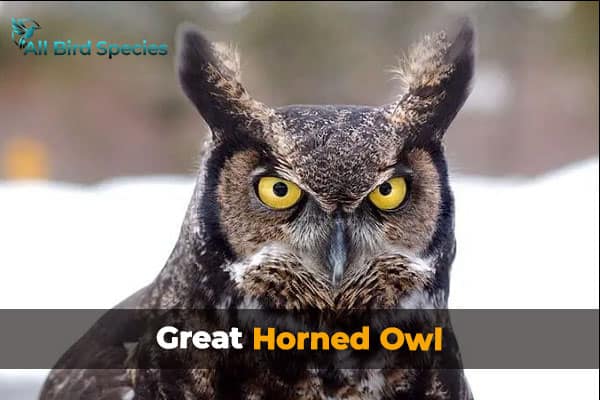
Identification and Characteristics
The Great Horned Owl is big and has a strong presence. Adults are 18 to 25 inches tall and can have a wingspan of up to five feet. Their feathers help them hide in daylight, and their yellow eyes make them stand out.
Habitat and Distribution in South Carolina
In South Carolina, the Great Horned Owl lives in many places, like forests, wetlands, and even cities. They can live in different environments, making them common across the state. Their nests are high up in trees or on cliffs, giving them a safe spot. These owls can be found in both rural and city areas, showing how adaptable they are.
Diet and Hunting Techniques
The Great Horned Owl eats a variety of animals, including mammals, birds, and small creatures. They hunt with great stealth and precision. Using their amazing hearing and night vision, they find prey in the dark. Then, they swoop down silently and grab their prey with their strong talons. This shows why they are top predators at night in South Carolina.
| Characteristic | Details |
|---|---|
| Scientific Name | Bubo virginianus |
| Height | 18-25 inches |
| Wingspan | Up to 5 feet |
| Habitat | Forests, wetlands, urban areas |
| Diet | Mammals, birds, small prey |
| Hunting Style | Stealth and precision |
2. Eastern Screech Owl
- Wingspan: 48 – 61 cm
- Length: 16 – 25 cm
- Mass: 121 – 244 g
- Lifespan: 14 years
The Eastern Screech Owl, known as Megascops asio, is a bird we often see in South Carolina’s diverse landscapes. It’s the smallest owl in SC, known for its unique looks and how well it fits into different places.

Physical Features and Color Morphs
Eastern Screech Owls have two main colors: grey and rufous. These colors help them hide in forests and cities. They have big eyes and ear tufts that make them stand out to bird lovers.
Nesting Habits and Habitats
Eastern Screech Owls are great at making homes in trees or nesting boxes. They can live in many places, even in cities. Both parents take care of the eggs, showing how much they value family.
3. Barred Owl
- Wingspan: 99 – 110 cm
- Length: 43 – 50 cm
- Mass: 470 – 1050 g
- Lifespan: 27 years
The Barred Owl, known as Strix varia, has a unique call that fills the woodlands of South Carolina. Seeing these birds while birdwatching is rewarding. Their calls are both unique and tell us they are there.
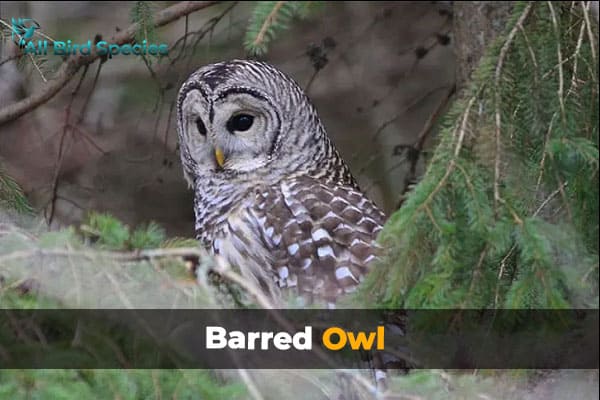
Unique Calls and Behavior
The Barred Owl’s call sounds like “Who cooks for you? Who cooks for you all?” This call helps us identify them. You can hear it in the forests at dusk and dawn. These calls are important for communication and marking their territory.
Preferred Habitats in South Carolina
Barred Owls live in moist forests and swamps, like Sumter National Forest. They like places with lots of foliage for hiding and nesting. Being near water helps them hunt and shows why we must protect these areas for them.
Dietary Preferences
The Barred Owl eats small mammals, birds, and amphibians. It changes its hunting based on what’s available. This helps keep the ecosystem balanced. Understanding their diet helps us see how important they are to our environment.
| Aspect | Description |
|---|---|
| Scientific Name | Strix varia |
| Call | “Who cooks for you? Who cooks for you all?” |
| Habitat | Moist forests and swamps |
| Main Diet | Rodents, birds, amphibians |
4. Barn Owl
- Wingspan: 100 – 125 cm
- Length: 32 – 40 cm
- Mass: 400 – 700 g
- Lifespan: 15 years
The Barn Owls, known as Tyto alba, is a fascinating bird found in South Carolina. It has a unique heart-shaped face that catches our eye. Let’s dive into its nesting and breeding habits and its role in South Carolina’s wildlife.

Identification and Distinct Features
The Barn Owl stands out with its pale, almost ghostly feathers. These feathers help it blend into the twilight sky. Its face has a special disk that improves its hearing, making it a great hunter. It can fly silently, helping it sneak up on prey in the fields.
Nesting and Breeding Habits
Barn Owls pick unusual places for their nests. They like old buildings, hollow trees, and cliffs. They breed many times a year, laying several eggs each time. The young stay in the nest until they’re ready to fly and hunt on their own.
Related Video:
The Barn Owl plays a big role in South Carolina’s wildlife. They eat small mammals like rodents, helping farmers by controlling pests. This shows how important it is to protect their homes for our ecosystem’s health.
5. Short-eared Owl
- Wingspan: 85 – 103 cm
- Length: 34 – 43 cm
- Mass: 206 – 475 g
- Lifespan: 12 years
The Short-eared Owl, known as Asio flammeus, is a special sight for those who love birdwatching in South Carolina. It’s known for hunting in the daylight, showing off its interesting behavior.
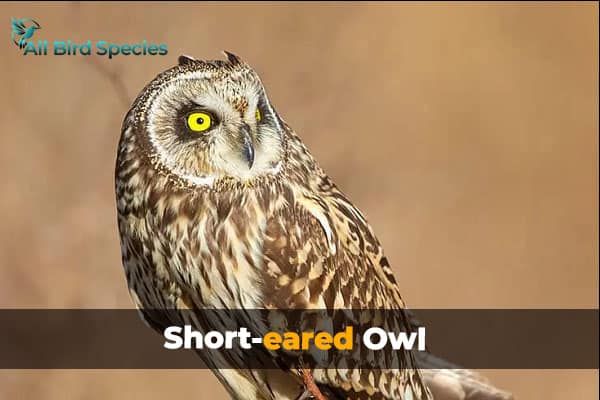
Behavior and Activity Patterns
Short-eared Owls are most active at dawn and dusk. They fly over open fields, looking for small mammals to eat. This makes them a great sight for birdwatchers who want to see owls during the day.
Habitat Preferences in South Carolina
In South Carolina, these owls like open areas like grasslands and meadows. These places are perfect for hunting and making nests. In winter, they move south to find more food, making them easier to see. Seeing them in their natural habitat shows how they adapt and the beauty around them.
6. Snowy Owl
- Wingspan: 126 – 145 cm
- Length: 52 – 71 cm
- Mass: 1600 – 2950 g
- Lifespan: 24 years
The Snowy Owl, known as Bubo scandiacus, is a rare sight for birdwatchers and nature lovers. It’s especially rare in southern areas like South Carolina. This owl is mostly found in the Arctic but sometimes visits places like Francis Marion National Forest in SC.
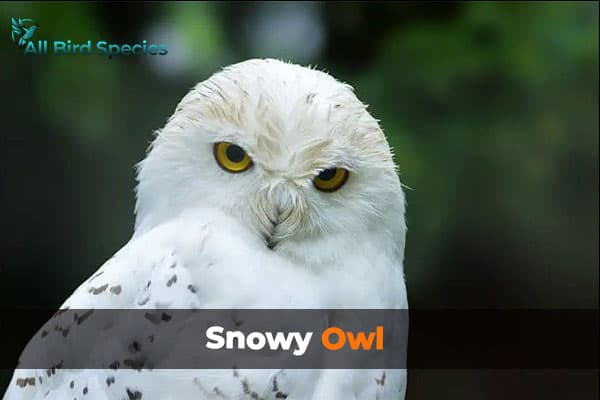
Rare Sightings and Characteristics
Snowy Owls stand out with their white feathers and dark spots. These spots help them blend in with the snow. Their bright yellow eyes make them look both beautiful and powerful.
These owls are more common in the north, but their visits to SC are exciting. Each time they come, it’s a big event for birdwatchers.
Feeding Habits and Diet
Snowy Owls eat small mammals and birds. They hunt by watching carefully and then striking quickly. In South Carolina, they might eat different things because of what’s available.
This shows how adaptable they are. Learning about their diet helps us understand their role in nature during their visits.
7. Long-eared Owl
- Wingspan: 90 – 100 cm
- Length: 35 – 40 cm
- Mass: 220 – 435 g
- Lifespan: 27 years
The Long-eared Owl, known as Asio otus, is a hidden gem in South Carolina’s wildlife. It blends into the woods, making it hard to spot. Learning to recognize this owl can make birdwatching more exciting.

Identification and Vocalizations
This owl stands out with its big ears and large eyes. Its brown and buff feathers help it hide in trees. It makes different sounds, like deep hoots and screeches, to communicate with others.
Habitat and Feeding Behavior
In South Carolina, the Long-eared Owl likes open woods and forest edges. It hunts small mammals and birds at night. Its sharp hearing and vision help it find prey in the dark.
| Feature | Description |
|---|---|
| Scientific Name | Asio otus |
| Identification Features | Prominent ear tufts, mottled brown and buff plumage |
| Vocalizations | Deep hoots and screeches |
| Preferred Habitat | Open woodlands and forest edges |
| Diet | Small mammals and birds |
| Hunting Behavior | Nocturnal, relies on acute hearing and vision |
Owls in South Carolina: Summary of Species
We are proud of the diverse owls in South Carolina, including those that live here and those that visit. Knowing about these owls helps us appreciate them more. It also shows why we need to protect them.
Breeding Residents vs. Migratory Visitors
South Carolina is home to owls like the Great Horned Owl and Barred Owl. These owls live here all year. On the other hand, owls like the Snowy Owl and Short-eared Owl come here during certain seasons. This mix of owls makes our ecosystem rich and diverse.
Importance of Conservation Efforts
Protecting owls is crucial for their survival and their homes. We need to spread the word about these amazing birds and work together to save them. By doing this, we help not just the owls but also our entire ecosystem.
Owls In Other Regions:
Wrapping Up…
In this article, we’ve taken a deep dive into the owl species found in South Carolina. We’ve looked at everything from the Great Horned Owl to the Barn Owl. We’ve learned about their unique traits, how they act, and where they like to live.
This guide aims to make us appreciate these amazing night birds more. It shows how important it is to watch and learn about owls. Doing so can be a fun outdoor activity.

